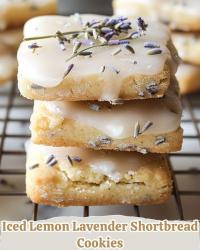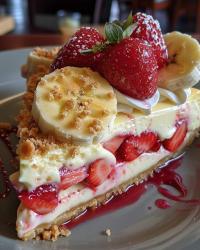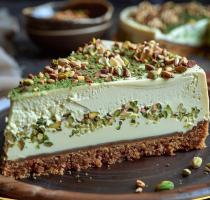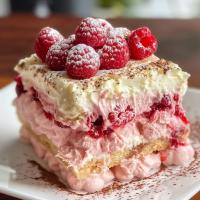Copy Link
Add to Bookmark
Report
Lambic Digest #0487

From postmaster at lance.colostate.edu Thu Nov 17 03:19:10 1994
Status: O
X-VM-v5-Data: ([nil t nil nil nil nil nil nil nil]
["16834" "Thu" "17" "November" "1994" "00:30:22" "-0700" "subscription requests only" "lambic-request at lance.colostate.edu" nil "390" "Lambic Digest #487 (November 17, 1994)" "^From:" nil nil "11" nil nil nil nil]
nil)
Received: from longs.lance.colostate.edu by goodman.itn.med.umich.edu with SMTP id AA27612
(5.65b/IDA-1.4.3 for spencer at hendrix.itn.med.umich.edu); Thu, 17 Nov 94 03:19:03 -0500
Received: (daemon at localhost) by longs.lance.colostate.edu (8.6.9/8.6.5a (LANCE 1.01)) id AAA03566 for reallambic at longs.lance.colostate.edu; Thu, 17 Nov 1994 00:30:22 -0700
Message-Id: <199411170730.AAA03566 at longs.lance.colostate.edu>
Reply-To: lambic at lance.colostate.edu (postings only - do not send subscription requests here)
Errors-To: lambic-request at lance.colostate.edu
From: lambic-request at lance.colostate.edu (subscription requests only - do not post here)
To: lambic at lance.colostate.edu
Subject: Lambic Digest #487 (November 17, 1994)
Date: Thu, 17 Nov 1994 00:30:22 -0700
Lambic Digest #487 Thu 17 November 1994
Forum on Lambic Beers (and other Belgian beer styles)
Mike Sharp, Digest Coordinator
Contents:
SOB scoresheets etc ("Daniel F McConnell")
SOB scoresheets etc
More white beer talk ("Phillip Seitz")
Wits and yeast (Spencer.W.Thomas)
SOB Dubble and Tripple ("CANNON_TOM")
Brett. from peaches? (bickham)
Meat for the wolves ("Phillip R. Seitz")
Send article submissions only to: lambic at longs.lance.colostate.edu
Send all other administrative requests (subscribe/unsubscribe/change) to:
lambic-request at longs.lance.colostate.edu
Back issues are available by mail; send empty message with subject 'HELP' to:
netlib at longs.lance.colostate.edu
Phil Seitz' series on Brewing Belgian Beer is available; the index
from the archives lists individual topics and the complete set.
Start with the help message above then request the index.
A FAQ is also available by netlib; say 'send faq from lambic' as the
subject or body of your message (to netlib at longs.lance.colostate.edu).
----------------------------------------------------------------------
Date: 16 Nov 1994 06:54:40 -0500
From: "Daniel F McConnell" <Daniel.F.McConnell at med.umich.edu>
Subject: SOB scoresheets etc
Subject: SOB scoresheets etc
I like Phil's idea regarding an analysis of the SoB recipes, especially if
it is reviewed in light of the data Eric presented in his talk with a focus
on ingredients, methods and cultures. Perhaps a detailed statistical
summary could be included in the conference transcript?
I am planning to publish segments of my transcript to the LD as they
become available....I mean written. That way I will only embarass myself
worldwide on a temporary basis rather than permantly by hard copy.
DanMcC
------------------------------
Date: Wed, 16 Nov 94 09:08:54 -0400
From: "Phillip Seitz" <p00644 at psilink.com>
Subject: More white beer talk
Scott Bickham mentioned additions of lactic acid to white beers. I
think that using a lacto culture is probably the most authentic way to
go, but one of the many things that Philippe Perpete mentioned is that
some Belgian breweries are also adding lactic acid at bottling to
create acidity. Please note that this doesn't mean the BEST beers do
this, but just that we're not alone in trying it.
It sure looks like people want to see the recipes, so I guess I'll have
to bow to the weight of public opinion. :-) However, I will be out of
town until Sunday night; I'll post any I can before I leave, and handle
the rest after my return. Score sheets will probably hit the mail on
Monday the 21st. I apologise for the delay, but life is sometimes
cruel (I'm referring to mine, not to the distress I'm inflicting on
you). I'll probably exercise some editorial control and post only the
winners that hit over 30, though almost all were well above that.
------------------------------
Date: Wed, 16 Nov 94 11:32:20 EST
From: Spencer.W.Thomas at med.umich.edu
Subject: Wits and yeast
I carried 4 bottles from Dan's & my witbier yeast experiment to the
SoB. We gathered in our room with Phil Seitz, Jim Busch, and
Phillippe Perpete.
This beer was brewed in March, and Dan & I have done "horizontal"
tastings of it several times since then. It was a 15 gallon batch
split with 5 yeasts: Hoegaarden (via M. Schiller/YCKC), Blanche de
Bruges (cultured from the bottle by Dan, I think), Dentergems (also
from M. Schiller, I think), and Steendonk (I'm not sure of the origin
of this one). The 5th yeast was Brewtek CL-90 (CL-900?), but we
find it to be essentially indistinguishable from the Hoegaarden strain.
We used NO lactic component, as we wanted to concentrate on the yeast
character. You could argue that with a lactic component, the yeast
character will come through differently. You're right, but that's a
different experiment.
Here's a "matrix" of the tasting results, as I remember them. (I'm
sure someone will correct me if I'm remembering incorrectly).
Age Bruges Dentergems Hoegaarden Steendonk
1month Soft, bready, A bit phenolic Very fruity VERY phenolic,
mildly spicy 2nd pref. unpleasant
"best"
3 mon Very soft, Nice "smoky" Still fruity, Still phenolic.
subtle, faded phenolic aroma, a bit too much
fruity, spicy, so.
"best"
8 mon Complex, Faded, still Fruity, but Less phenolic, but
smooth, very some nice faded. "2nd" still not overly
nice. Some phenolic char- pleasant.
phenols at acter, but more Gushes slowly.
low levels. 1-dimensional
"best" than the Bruges.
(8 months is the tasting at the SoB.) All of these dried out
significantly from the initial tasting. This is probably because they
were bottled before fermentation had completely finished. One thing I
learned during the SoB presentations is that many Belgian yeasts are
extremely cold-intolerant, and will slow down or stop if the
temperature is too low.
The "Bruges" version was entered in the AHA Nationals and got a 37, as
I recall. The "Dentergems" version was entered in the SoB. I don't
know the score at this point, but it took 3rd. I wonder how we would
have done had we entered the "Bruges" version again? We'll never know!
For what it's worth, the Bruges yeast went on to become the YeastLab
"Belgian White" yeast. It's interesting to note that its flavor
profile went through a "dip" in the middle of the aging period -- it
was very good young, and again when it was old, but in the middle it
lost something.
Oh yeah, the recipe: (for 15 gallons)
11 lbs Durst pilsner malt, 10 lbs raw soft organic wheat from the food
co-op, 1 lb flaked oats from the food co-op. Multi-step infusion
mash, with a brief decoction to raise from the protein rest to first
sugar rest.
85g hallertauer hops, divided, at 60 & 30 minutes, for about 12-15IBUs
35g Curacao orange peel from the Frozen Wort, crushed in a mortar, for
30 minutes
35g coriander seeds, crushed, for 15 minutes.
Fermentation was in Dan's basement, probably about 65F, for 3 weeks.
------------------------------
Date: Wed, 16 Nov 94 12:45:46 EST
From: "CANNON_TOM" <CANNON_TOM at hq.navsea.navy.mil>
Subject: SOB Dubble and Tripple
As posted earlier this week, Andy Anderson won firsts at the
Spirit of Belgium for his Dubble and Tripple, and got third
for BOS for the Dubble. Two weeks ago, Andy began a two
year tour as the US Navy's Exchange Scientist to the British
Ministry of Defense stationed in Bath, UK. His most
disappointed finding during his first weeks in England, is
that the information superhighway has left that part of the
world behind. We have been communicating by phone, and Andy
faxed me this message this afternoon:
Greetings from Bath, England
I want to thank Tom Cannon for passing these words on
and being nice enough to inform me of the results of the
Spirit of Belgium. I work in a secure site with no Internet
access, so I'm basically blind to the outside world. I've
given Phil (via Tom) permission to post my recipes, so I
won't try to duplicate them here. But then again I
couldn't even if I wanted to. My brewing notebooks are
packed away with the rest of my brewery in the hold of some
cargo ship in the Atlantic. Hopefully, my brewery will be
set up by the end of the year. If I'm going to live in
England for two years, I had better have my brewery at my
side.
General Notes:
1. I knew that I would be in England when the SOB was held,
so I tried to be as accurate as possible with the recipes I
wrote down. The mashing specifics may not be complete, but
the ingredients are.
2. Candi Sugar - I don't know if the real thing is
important or not, but both of my beers used candi sugar
(dark for the dubble, light for the tripple) from the 5 kg
stash I brought back from Tom's and my visit this spring to
Brugse.
3. Fermentation temperature - Tom has told me that Pierre
Rajotte continues to maintain that high fermentation
temperatures are important in brewing Belgian Beers. That
may be, but I used low temperatures. 60-65 deg F for both
the dubble and the tripple. However, I control my
temperatures quite differently than most people. I don't
have a brewing refrigerator, so I put the carboys in water
baths to which I add ice. The dubble was actually fermented
in a water bath in a room with a window A/C unit which ran
constantly for 2 weeks to keep the temperature low.
The key to all this rambling is the convection
properties of the water. I believe that I am keeping a
narrower band of temperature fluctuation than even someone
using a refrigerator. A high-alcohol beer is a very
exothermic reaction. I've seen temperatures 9 deg F higher
in a carboy than in the air temperature surrounding it in
the refrigerator. Water strips away the extra heat
immediately, thus keeping the beer at a more constant
temperature. For all you people using refrigerators for
fermentation, I'd suggest putting your carboy in a water
bath inside your refrigerator and then putting the
refrigerator's temperature probe into the water bath.
4. Time - My tripple sat 35 days before I bottled it.
Something like 2 weeks in primary and the rest in secondary.
I'm only guessing, but I believe that the extra time sitting
on some yeast in secondary helps to smooth some of the rough
edges in high alcohol beers.
5. Additional Yeast - If your beer is going to sit for a
month before you bottle, I like to propagate a fresh batch
of yeast to add when bottling.
Tripple:
I don't mean to sound arrogant, but to get a pretty
decent Trippel is actually rather easy. Use the right
ingredients: pilsner malt, a little maize, some sugar, and
lightly add some noble hops. Just make sure you pitch
enough clean yeast and then aerate it quite thoroughly. I
fermented with Wyeast Wit at 60-65 deg F for a long time.
However, the tough part is making it to the peak of the
mountain. I drank one of my tripples and patted myself on
the back. Then, I had a La Chouffe and was appropriately
humbled. It was so smooth and devoid of the higher
alcohols. That's the peak of the mountain.
Dubble:
I think this style is harder than the tripple, if only
because the potential list of ingredients are greater. When
I try this style again, I'll increase Special B and
Cara-Munich by 50%. I did a double decoction mash and 1/2
of the pilsner malt was German all in the hope of increasing
the malty mouthfeel (melanoidens?). I think it worked, but
it made for a long brewing day: 4:30 PM until 4:00 AM - and
then I had to go to work again.
I think my dubble was overcarbonated. I have a feeling
that I didn't let it sit long enough. Next time I'll let it
sit longer as well as elevate the temperature a few degrees
during the last week in the carboy. I use a fish tank
heater submerged into the water bucket to do this.
On a final note, Tom told me the results of the SOB on
Monday. I was quite happy, but had to keep my elation under
control. I told one person I now work with and his response
was basically "Why do you bother brewing?" Oh well, I guess
I have 2 years to educate my co-workers
Andy A.
I judged Andy's Tripple at the Spirit of Belgium. It got a
table score of 34 and would have been over 40 but had kind
of a weak head and was somewhat hazy. The tripple character
in the taste, however, was spot on. I agree with Andy's
assessment of Tripples, they should not be too hard to brew
if you keep the fermentation temperture right. Too high and
you ferment out unwanted higher alcohols (fussels), but too
low and you lose a lot of the yeast character. Andy's was
the only one in the competition that got it right. Also,
it's been my job the past two weeks to collect all of Andy's
ribbons. He got three last week and SOB and three the week
before at the DReBs competition in Washington DC. If he
keeps up this pace, I'm going to stop judging in contests
where he's entered beers :-).
Tom Cannon
------------------------------
Date: Wed, 16 Nov 1994 16:03:02 -0500 (EST)
From: bickham at msc.cornell.edu
Subject: Brett. from peaches?
At our monthly meeting last night, someone brought over a peach
wheat to which fresh peaches had been added to the secondary.
They had been peeled, depitted and frozen for a couple of days,
but nothing else was done. I brought the glass to my nose and
immediately noticed a leathery brettanomyces aroma. It was also
in the flavor, along with a little acetic acid. It was actually
quite good, so I'll streak out the dregs and see what's there.
The brewer didn't know that freezing (at least on a household level)
often only causes dormancy, and isn't a surefire way of sterilization.
In any case, hopefully my next pLambic will benefit from his error.
Scott
- --
========================================================================
Scott Bickham
bickham at msc.cornell.edu
=========================================================================
------------------------------
Date: Wed, 16 Nov 94 22:19:37 -0400
From: "Phillip R. Seitz" <p00644 at psilink.com>
Subject: Meat for the wolves
Okay, okay, people want recipes! Unfortunately I'm going to be out of
town for the next few days, but I have a few minutes to copy down a
recipe or two. These are the winning double and triple entries (with
the double taking 3rd place best of show), courtesy of Andy Anderson.
So why do I have the feeling that this is like the New York
blackout--when all those children were born 9 months later? I expect
to see lots of clones out there 2-3 months from now!
Belgian Nectar (Triple): 5 gallon recipe
15 lbs HDM Pilsner
1 lb flaked maize
2.2 lbs Belgian candi sugar
1.25 ozs U.S. Hallertau (5.3%) boiled for 60 minutes
1 oz Saaz (5%) boiled 15 minutes
Wyeast 3944
OG: 1.085
FG: 1.023
Prime with 1 cup sugar
Andy lists mash temp at 156; I suspect he used a protein rest and mash
out, but there's no space for all this info on the AHA entry form.
Ferment in primary 13 days at 60F; 26 days in secondary at 65F.
Judge's comments:
Aroma: "Alcohol definitely present, but pleasant wafts of malt charge
through"; "Malty sweet".
Flavor: "Beer starts with nice up front sweetness that manages to
linger, although it rolls into a pleasant spiciness. Finish is
a bit hot and alcoholic." "Honey in taste... sweet, alcoholic,
warming, very pleasant. Hop balance good for style--would like
more yeast flavors."
Other: the judges generally wanted more frothiness in the conditioning.
I don't know if Andy used fresh yeast in the priming.
Aaron's Reprise (Double): 11 gallon recipe
10 lbs HDM Pils
10 lbs Ireks pils (ran out of HDM, eh Andy?)
4 lbs HDM biscuit
2 lbs HDM aromatic
1 lb HDM caramunich
1 lb Ireks wheat malt
3/4 lb HDM Special B
2 ozs US Tettnang (6.2%): boil for 60 minutes
0.5 oz East Kent Golding (55): boil for 15 mintues
Chouffe yeast strain
OG 1.069
FG 1.022
Prime with 1 cup sugar
Double decoction rest with saccrification at 158F. Ferment 9 days at
60F; secondary 10 days at 60F.
No water treatment was used for either recipe.
Judges' comments:
Aroma: "First up is esters, a little yeast, some plum (good!)", "Esters,
some alcohol heat, some yeast, some plum--overall, a pleasantly
complex aromatic experience."
Comments: "Excellent mousse, light on the tongue. Good plum flavor,
aromatic malt character good. Alcohol in the background."
"Dry, thinner, Westmalle like."
Other: The conditioning on this beer was exceptional, leading to a very
full, rich head and mousse-like carbonation without excessive
gassiness.
More on the way, as soon as I have time.....
------------------------------
End of Lambic Digest
************************
-------


























